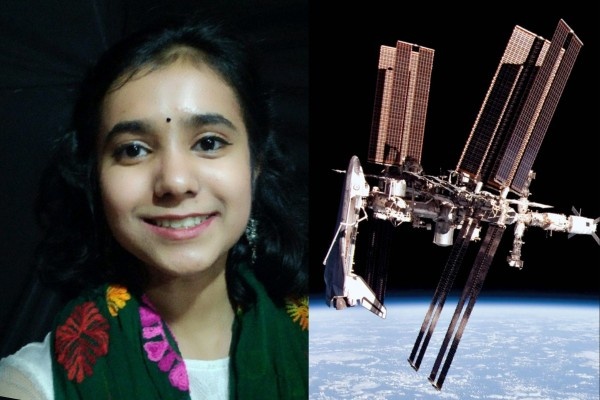India-US renewable energy partnership is a gamechanger, says diplomat Sripriya Ranganathan
The Deputy Indian Ambassador to US was speaking at the US-India Clean Energy Event held to identify relative gaps, strengths, and opportunities for enhanced cooperation through coordination between the two nations.
.jpg) Sripriya Ranganathan delivering her keynote speech. / Screengrab
Sripriya Ranganathan delivering her keynote speech. / Screengrab
Deputy Ambassador of India to the US, Sripriya Ranganathan, highlighted the various projects launched between India and the US to advance renewable energy technologies during the US-India Clean Energy Event organized by the Center for Strategic and International Studies (CSIS) on June.18.
Emphasizing ambitious goals, she mentioned that India is projected to experience the largest increase in energy demand of any country worldwide over the next 20 years.
“As a rapidly developing nation, as the world's most populous country, and as a democracy which is answerable to its people, our energy policies must form part of our developmental agenda,” she said. “Our (India’s) clean energy goals have therefore been set against a backdrop of balance, balance between energy security, access to energy, market stability and affordability,” she added.
The CSIS event convened prominent stakeholders to identify relative gaps, strengths, and opportunities for enhanced cooperation through coordination between the two nations. It featured speakers such as Deputy Special Envoy for Climate Richard Duke, Andrew Light (Assistant Secretary for International Affairs, DoE), Geoffrey Pyatt (Assistant Secretary for Bureau of Energy Resources, Department of State), Jake Levine (Chief Climate Officer, DFC), Dr Praveer Sinha (CEO, Tata Power), and Mark Widmar (CEO, First Solar).
Heat waves driving drastic energy demand surge in India
Richard Duke highlighted the critical issue of cooling, noting the severe heatwave currently affecting India and the broader Indo-Pacific region, with temperatures consistently exceeding 110 degrees Fahrenheit for weeks. This trend is also anticipated in the US, he said.
“With a growing middle class and rising temperatures, electricity use from air conditioners in India is projected to rise dramatically. And frankly, it needs to in order to deal with this warming trend and the development benefits that air conditioning brings, the public health and comfort benefits that it brings and productivity benefits,” Duke said. “But this translates into an 8x increase in the demand for cooling in the next two decades in India,” he added.
.jpg) Richard Duke. / Screengrab
Richard Duke. / ScreengrabIndia’s role in global clean energy goals
Andrew Light highlighted a significant achievement in the energy sector over the past six months—the agreement to triple renewables and double energy efficiency by 2030, originating from the G20 energy track under India's leadership.
“One of the things that we're focused on now, and this stems very much from our cooperation with India, is we've made this year our year to focus on energy storage, a global energy storage target to accompany the tripling renewables and doubling efficiency target,” Light said.
He said that this includes a global target set at the G7 to achieve a six-fold increase in long-duration storage to 1,500 gigawatts by 2030, complemented by a commitment to invest in 10 million kilometers of new transmission lines worldwide. “We (the US) think with the support of partners like India, we can move that through the G20 and potentially into at least a good action agenda item for the Azerbaijan COP,” Light added.
.jpg) Andrew Light. / Screengrab
Andrew Light. / Screengrab
India’s sustainability goals
Mark Widmar praised India for its clear strategic vision and ambitious goals aimed at achieving long-term energy independence and security. He highlighted India's proactive establishment of a supportive policy environment that instills confidence for multinational investments.
“As a multinational to go into India and to have a policy environment that had a demand initiative around it, had a focus around creating domestic capability in a supply chain,” he said.
.jpg) Mark Widmar. / Screengrab
Mark Widmar. / ScreengrabGeoffrey Pyatt also noted a significant transformation in the US-India relationship over his three decades of involvement, emphasizing the emergence of global Indian companies such as Tata. “The biggest single change that's happened to the US-India relationship over my three decades of involvement with it is the rise of global Indian companies like Tata and the hardwired instinct towards partnership with American counterparts,” Pyatt emphasized.
Pyatt also highlighted the critical role that ambassadors and diplomatic missions abroad play in fostering collaboration among various stakeholders. “Our ambassadors and our missions abroad can play a hugely important role in sort of bringing together everybody, and I think we're fortunate to have Eric Garcetti as an ambassador in Delhi right now who really believes in these issues as a Californian,” he said.
.jpg) Geoffrey Pyatt. / Screengrab
Geoffrey Pyatt. / Screengrab




.jpg)













Comments
Start the conversation
Become a member of New India Abroad to start commenting.
Sign Up Now
Already have an account? Login